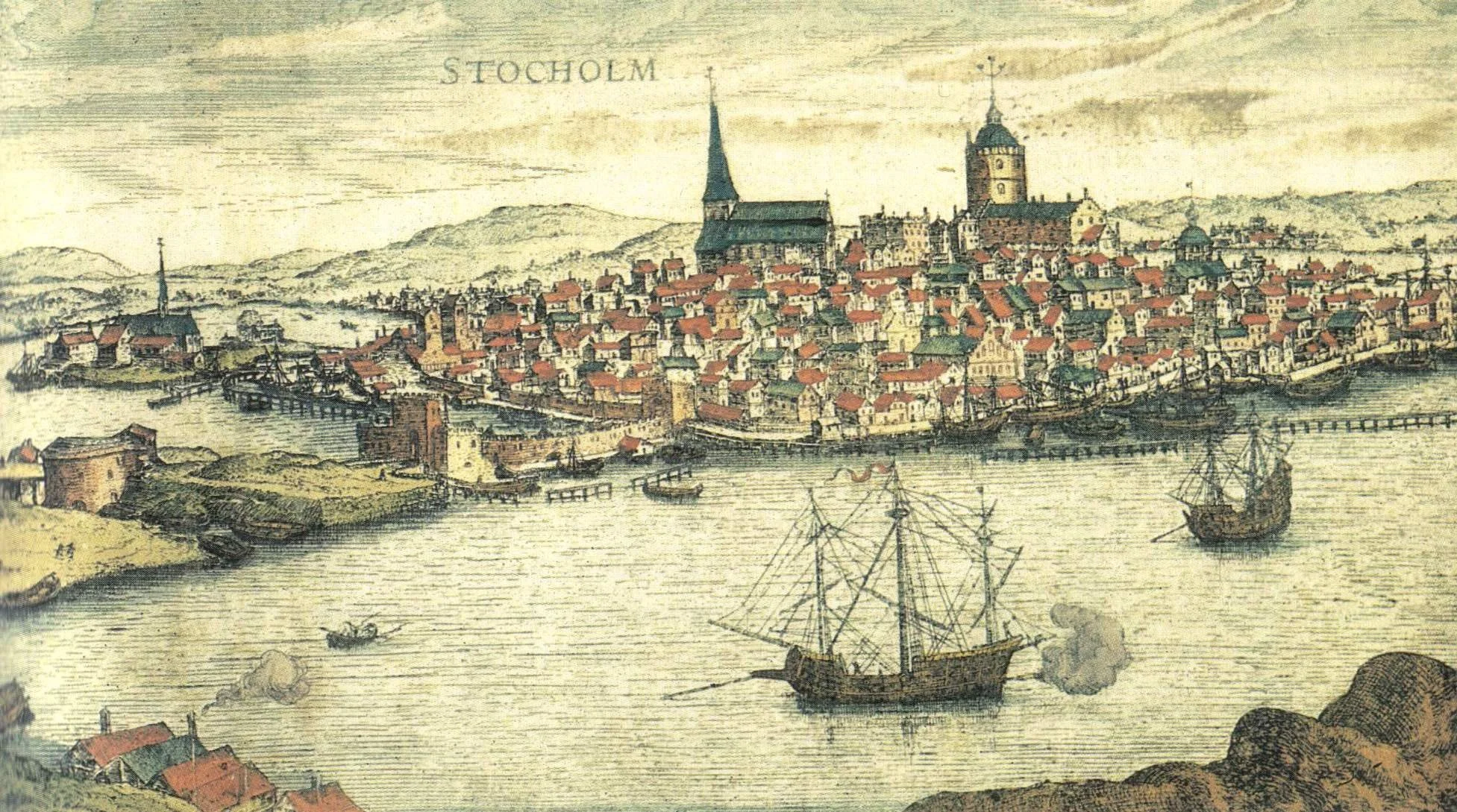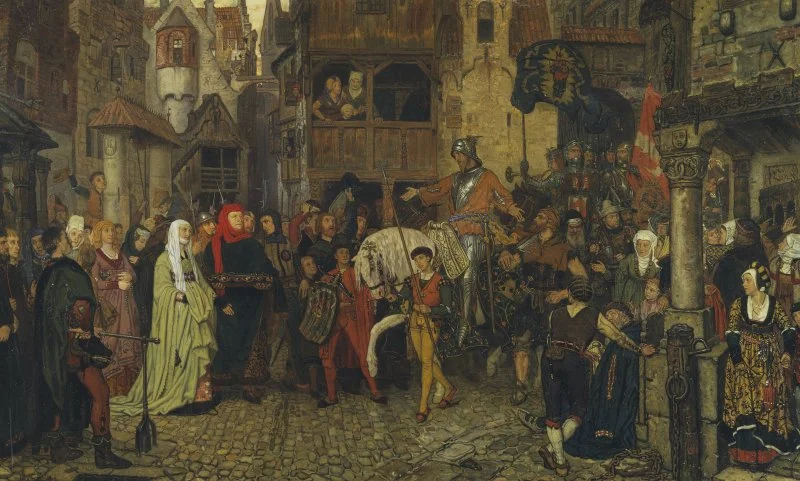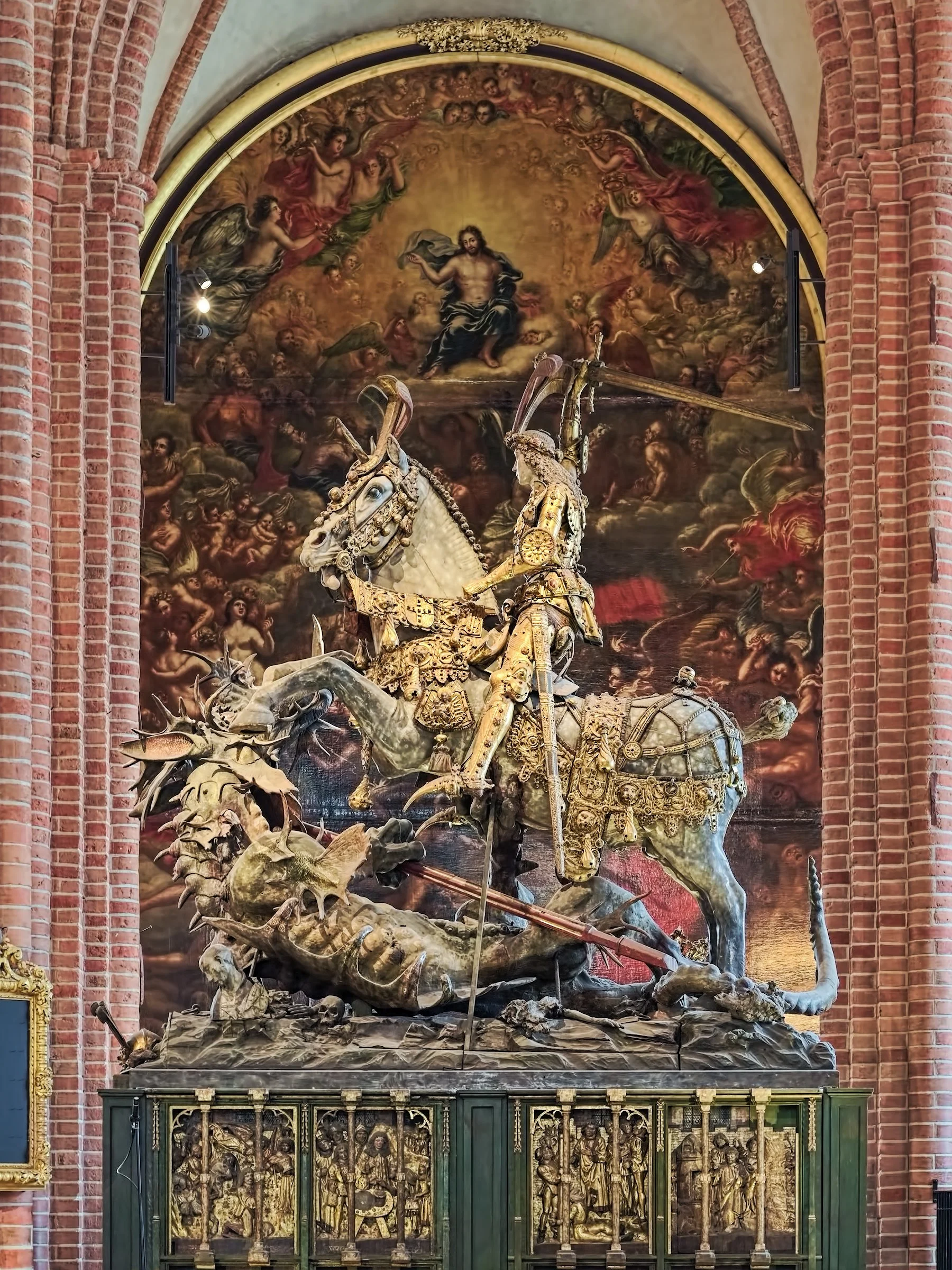Battle of Brunkebergsåsen - a Brief History of the SWF22 Venue Area
A map showing Brunkebergåsen dated 1637
Stockholm is steeped in history, and the area around the festival venue, Brunkebergstorg, is no exception. It has to be a wonderful inspiration to those of you writing local historical fiction, but a little knowledge of local history for the rest of us can really help us appreciate this incredible city. With that in mind, we've compiled a short story on the area directly surrounding the festival venue, including just how it got its name.
While it may not be immediately apparent today, the area of Norrmalm is divided into a western and eastern part by an esker known as Brunkebergsåsen, a long, high ridge formed by glacial deposition some 11,700 years ago.
Much of what remains of Brunkebergsåsen is obscured by buildings today or has been excavated away during 750 years of city development, but if you know where to look, remnants abound. Notably, the pedestrian tunnel Brunkebergstunneln, which provides a shortcut through the esker itself, is a practical example. The areas around Johannes Kyrka, Observatorielunden, and Vanadislunden also make it apparent that there is, in fact, an irritatingly large hill in the center of Norrmalm.
This raised ridgeline is named for the ill-fated Johan Brunke, a high royal official of King Birger. Brunke was executed by beheading on Brunkebergsåsen in November of 1318, together with Ulf Svalebeck, Lyder Foss, and Wolram Skytte, all accused of being the king's accomplices in the betrayal of his two brothers, the dukes Erik and Waldemar. At King Birger's behest, the dukes had been captured and imprisoned at Nyköpingshus and intentionally starved to death. The executions of Brunke and his compatriates were some of the earliest written histories of Brunkebergsåsen, but 123 years later the area would see bloodshed on a much larger scale as it became the setting for a battle to determine the future of Sweden and who would be king.
King Kristian I - Looking decidedly pensive
The actual Battle of Brunkeberg took place on Thursday, October 10th, 1441. Sten Sture the Elder had just been elected regent of Sweden earlier in May of that year, much to the chagrin of King Kristian I, sovereign of Denmark and Norway, as well as the official head of the Kalmar Union, of which Sweden was a member. He wanted to reinsert himself as king of Sweden, including much of present-day Finland. In this endeavor, he was encouraged by a fair amount of support among the Swedish nobility.
Sten Sture, on the other hand, represented the secessionists. The miners, the burghers, and the peasantry, and his powerful allies, the Axelsson brothers. A force to be reckoned with, the brothers already controlled the Swedish and Danish borders, as well as much of the region that makes up modern-day Finland.
What followed was essentially a civil war, as many Swedes fought on both sides in this conflict, even if later the battle was recast politically as a Swedish victory over Danish repression.
A stern looking Sten Sture the Elder
As it happened, Kristian, taking umbrage at the election of Sten Sture with his secessionist views, gathered an army and set sail for Stockholm, intent on removing Sten Sture, and firmly placing Sweden back under his own authority.
His army consisted of Danish soldiers, German mercenaries, and a fair number of Swedish nobles loyal to the Kalmar Union who were worried by Sten Sture's growing power. Arriving in October of 1471, Kristian moored his ships off Skeppsholmen.
Finding the city gates closed to him by the inhabitants of Stockholm, and with the approach to the town controlled by a narrow bridge, he marched his forces to the north of the city to set up camp at the strategic high ground of Brunkebergsåsen, between modern Brunkebergstorg and Sergels Torg. To the south of his encampment lay Gamla Stan, encompassing the entirety of Stockholm at the time.
A view of medieval Stockholm (Gamla Stan)
The population of Stockholm was approximately 6,500 people, and Kristian's army consisted of 6,000 fighting men, so it is fair to say he felt somewhat comfortable that he would meet little resistance in open battle. However, Sten Sture had raised an army considerably larger, consisting of at least 10,000 men, if not all military men, hard men nonetheless.
On Thursday, the 10th of October, 1471, Sten Sture and Nils Bosson (representing the *Natt och Dag family) marched their force of miners, peasants, and farmers northwards, with Sture's men taking up positions as far north as Hötorget, and lining his forces up to the west of Brunkebergsåsen, and as far southwest as the St. Klara Monastery (today's St. Klara Kyrkan).
Meanwhile, Nils Bosse and his men circled around to the forested area to the east of the ridge, leaving Knut Posse and those under his command to defend the city and then attack from the south once the fighting began.
Upon his signal, Sture's forces launched two uphill attacks, but Kristian’s soldiers, holding the high ground, quickly repelled these two initial charges. As Sture's men retreated the second time, some of Kristian's forces broke ranks and chased the retreating troops down to St. Klara Monastery where fierce fighting ensued.
Intense fighting at St. Klara Monastery
The tide of battle turned in Sture’s favor as Nils Bosse's troops made a surprise charge out of the forest east of Brunkeberg’s ridge, and Knut Posse's city guard simultaneously launched an attack from the south, leaving Kristian's force embattled on three sides. During the ensuing battle, Kristian himself was struck in the face by musket fire. The wound, though not as severe as it could have been, reportedly caused him to lose his 4 front teeth, and faith in his cause.
The concerted attacks by Sture's combined forces left one Danish contingent completely cut off at the Klara monastery, and it's estimated that at least 500 men died in the fighting there; meanwhile Kristian, gravely wounded and in pain, was forced to withdraw entirely from the battle, retreating with his remaining forces towards the then island of Käpplingen (Blasieholmen peninsula today), where his troops had built a makeshift bridge. Here they were surprised again as Sture’s superior forces destroyed the bridge, and in the rout, many of the fleeing soldiers drowned in their attempt to escape. Again, it was estimated that approximately 500 men died at the collapse of the bridge.
Sten Sture enters Stockholm the victor
Sture’s victory over Kristian at the battle of Brunkeberg secured his power as regent of Sweden and Kristian returned defeated to Denmark, and never attempted to seize power in Sweden again.
Legend has it that before the battle, Sture had prayed to Saint George, and in the years following the battle, he commissioned a rather stunning statue illustrating the parable of Saint George and the Dragon by the artist Bernt Notke of Lübeck. The sculpture, pictured below, was erected in Storkyrkan in 1489 and remains there today. It is an incredible masterpiece of the late Gothic period and is still in pristine condition.
St. Göran and the Dragon at Storkyrkan in Gamla Stan
When planning your visit to the festival this year, it's well worth the time to take a historical walk from Brunkebergstorg, winding your way east to St. Klara Kyrkan, and then south to Gamla Stan. It's here in Storkyrkan that you'll still find the statue of Saint George and the Dragon, commemorating the battle. Note that Saint George is depicted wearing the coat of arms for Sten Sture, which makes it easy to interpret the dragon as representing the defeated Danish monarch.
*The Natt och Dag family is the oldest noble family of record in Sweden. In fact, a direct descendant, Niklas Natt och Dag, is a popular Swedish author of a series of blockbuster historical fiction novels, such as 1793, 1794 (Bellman Noir #2) and 1795.







